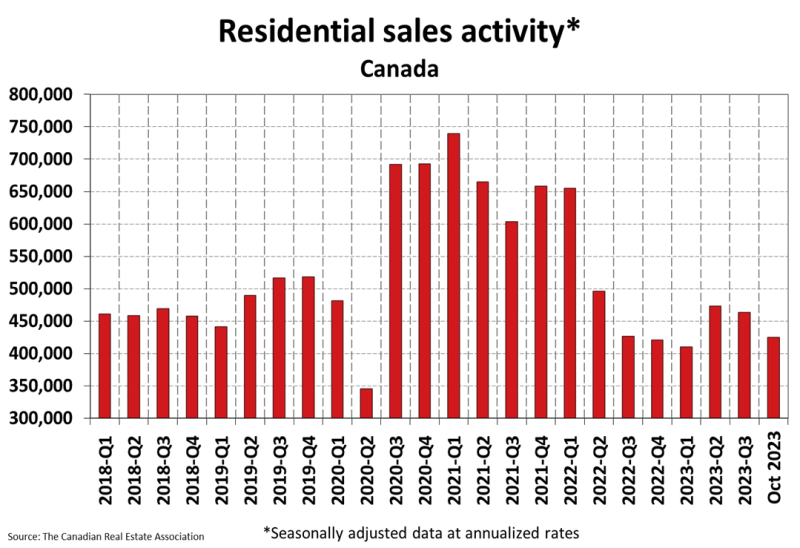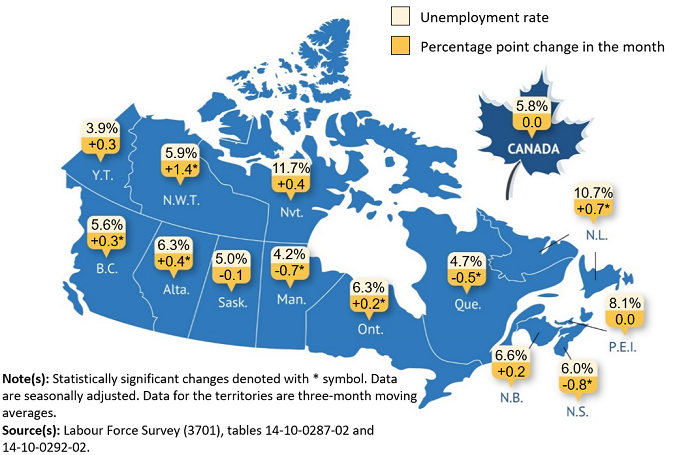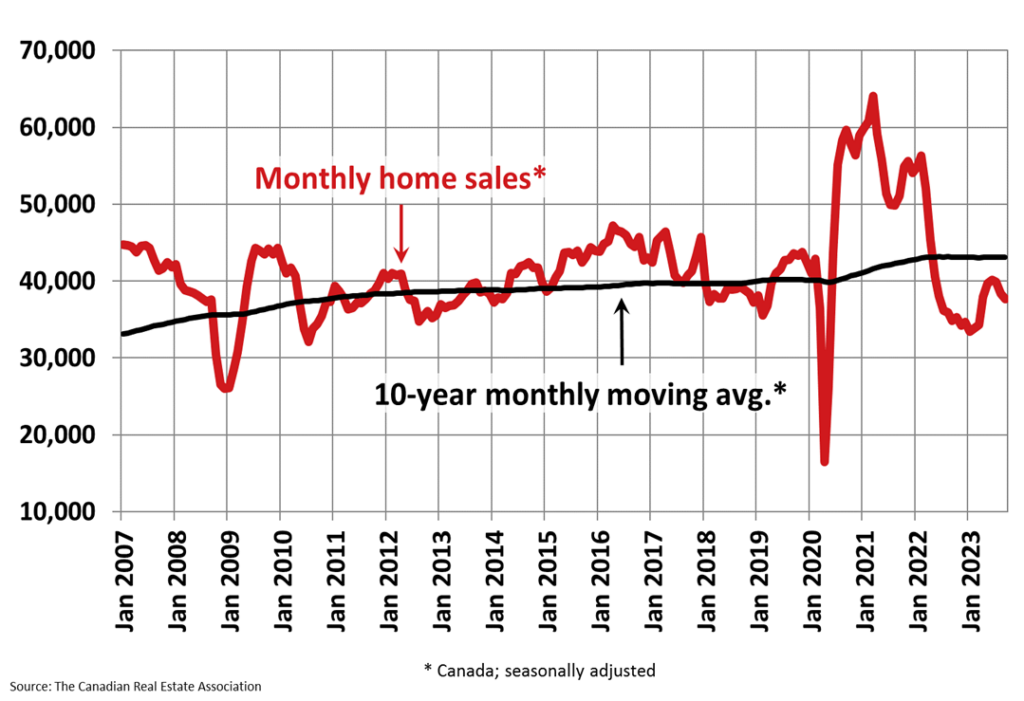Read the 2024 interest rate forecast.
Save money on your mortgage
Don’t leave money on the table
Don’t just go with your bank
Get today’s best rates from our lenders
On December 6th, The Bank of Canada published their decision to hold their Policy interest rate at 5.00%. There was an increase of 75 basis points to the Bank of Canada’s overnight lending rate in 2023, a notable but small increase in comparison to 2022’s 400 basis point run, the good news is, the Central Bank believes there’s now sufficient evidence pointing to slowing demand and increased probability of a recession, lead by slower consumption growth and a decline in housing activity, while still maintaining their hawkish and precautionary stance. Markets and Senior Economists are largely convinced there are no more rate hikes in the pipeline for Canadians and expect the first rate drop to come as soon as Q2. The Central Bank projects the economy will continue to cool down, bringing inflation back to its two per cent target some time in early 2025.
Commentary from Perch's CEO and Principal Mortgage Broker, Alex Leduc:
2024 is shaping up to be a great year for mortgage holders. Rates are expected to decrease by around 1% over the course of 2024, with the decline potentially starting as early as Q2. Long-term interest rates have already dropped by about 1% relative to September's expectations. That means cumulative rate cuts will be about 2.25% over the next 2 years and will normalize at that level. With a large amount of mortgages set to renew in 2025/26, the timing couldn't be better.
Key Takeaways
- The Bank of Canada has paused rate hikes for the time being, with the next announcement scheduled for January 24th.
- Today’s best mortgage rates are 4.90% for 5-year fixed and 6.00% for 5-year variable.
- For first-time home buyers, there are some great opportunities, sellers are coming to terms with tapering price growth as higher interest rates have barred many from entering the market, inventory is low, but will edge up in the early months of 2024, before really ramping up in the Summer.
- For homeowners who are coming up for renewal, continue to monitor our rate forecasts, it would be wise to see what rates Perch may be able to offer above and beyond your existing Lender, as they’re typically less aggressive on their rate offerings.
- For homeowners who would like to see the benefit of switching lenders and breaking their mortgage early, Perch automatically calculates the net benefit once you input your existing property and mortgage details in your Perch portfolio.
What's new in the mortgage world for January?
For the month of January, we anticipate fixed rates will drop and variable rates will remain the same. National sales activity edged down further in November by 0.9% month over month, remaining on trend with September’s and October’s declining sales activity. Canada’s inventory edged down by 1.8% month over month in November, the second consecutive decline we’ve seen since March. Sales activity has officially tapered off and inventory is now on a seasonal decline, contributing to a sales-to-new listings ratio of 49.8% in November, a small increase from the 49.4% in October, in comparison, this ratio peaked at 67.9% in April.
“I wouldn’t expect anything too headline-grabbing from the resale housing market for the next few months,” said Larry Cerqua, Chair of CREA. “That’s a good thing, because a market that looks to be stabilizing in balanced territory increasingly suggests the soft-landing scenario.”

The Bank of Canada is continuing to hold interest rates steady
On December 6th, The Bank of Canada published their decision to hold their Policy interest rate at 5.00%. There was an increase of 75 basis points to the Bank of Canada’s overnight lending rate in 2023, a notable but small increase in comparison to 2022’s 400 basis point run, the good news is, the Central Bank believes there’s now sufficient evidence pointing to slowing demand and increased probability of a recession, lead by slower consumption growth and a decline in housing activity, while still maintaining their hawkish and precautionary stance. Markets and Senior Economists are largely convinced there are no more rate hikes in the pipeline for Canadians and expect the first rate drop to come as soon as Q2. The Central Bank projects the economy will continue to cool down, bringing inflation back to its two per cent target some time in early 2025.
The strength of the Canadian economy
Real gross domestic product was essentially unchanged for a third consecutive month in October. Services-producing industries edged up 0.1%, while goods-producing industries were essentially unchanged, with the 20 industrial sectors evenly split between increases and decreases. Q3 negative GDP data released on November 30th shows that on an annualized basis, the Canadian economy contracted at a rate of 1.1%. Statistic Canada has also revised their previous Q2 data from a 0.2% decline to a 1.4% gain on an annualize basis. While this technically means Canada is not yet in a recession, as we have not yet had two consecutive contracting quarters, growth stalled, remaining essentially unchanged and coming in well below expectations. "We expect the economy to remain weak for the next few quarters," Bank of Canada Governor Tiff Macklem said, "The excess demand in the economy that made it too easy to raise prices is now gone." he added.

Key Terms:
GDP: GDP or Gross Domestic Product refers to the total dollar amount of goods and services produced in a country. It is an overall measure of the strength of our economy.
CPI: The CPI or Consumer Price Index is a measure of inflation tracked by Statistics Canada. It attempts to track the spending habits of the average consumer with a basket of typical goods and services.
Inflation trends down, but remains above target
November’s consumer price index, the measure for year over year inflation, came in at +3.1%, matching October’s CPI, when excluding food and energy, the CPI increased 3.5% in November, after a 3.4% gain in October. November’s CPI stalled mainly due to a smaller movement in gasoline prices (-3.5%) vs October’s (-6.4%). Canadians continued to battle elevated shelter costs (+7.4%) and mortgage interest costs (+29.8%) in November and beyond, notably, mortgage interest rates has been and continues to apply the highest upward pressure on the CPI since December of 2022. The Central Bank sees tightening household discretionary spending as their most viable tool to halt consumer spending on goods and services and attain their 2% inflation target, the CPI should drop below the 3% mark in December, the next slated CPI announcement will be on January 16th.

Job vacancies and Unemployment Rates

Strong population growth continues to fuel demand
Canada’s population saw an increase of 430,635 (+1.1%), from July to October 2023, the highest growth rate Canada has experienced in any Quarter since the baby boom, in 1957 (+1.2%). Strong population growth continues to add both demand and supply to the Canadian economy, newcomers are helping ease the shortage of workers while also boosting consumer spending and driving up demand for housing. Ottawa plans to level out the number of new immigrants it accepts in 2026, however will maintain their goal of attracting 500,000 newcomers annually in both 2024 and 2025. Many arriving in Canada’s major markets are searching for shelter amidst the home unaffordability crisis, driving up rental cost (+8.2%) in October. Provinces rely heavily on Canadian investors to supply rental apartments in the form of investment homes, however, as higher interest rates and mortgage costs have worked to deter existing and would be landlords, the supply of rentals has steadily declined which has driven up rents across the country.
Recommended reading: How does population affect the housing market?
Bond yields retrace their gains
Canada’s 5-year bond yields, which tend to track five-year bond yields at a premium and with a lag, have continued to plummet, by more than 1%, since they reached 16-year highs during the month of October. This steep movement was a catalyst of whispers and calls for a possible rate cut by the FED and the Bank of Canada in early 2024. The BoC is expected to cut their overnight lending rate by 1% by the end of the year, they’re expected to begin as early as Q2.

If you’re looking to buy a home in Canada:
Our current best 5-year fixed rates is 4.90% and 5-year variable rate of 6.00%.
For first-time home buyers, there are some great opportunities, sellers are coming to terms with tapering price growth as higher interest rates have barred many from entering the market, inventory is low, but will edge up in the early months of 2024, before really ramping up in the Summer.
For homeowners who are coming up for a mortgage renewal, continue to monitor our rate forecasts, it would be wise to see what rates Perch may be able to offer above and beyond your existing Lender, as they’re typically less aggressive on their rate offerings.
For homeowners who would like to see the benefit of switching lenders and breaking their mortgage early, Perch automatically calculates the net benefit once you input your existing property and mortgage details in your Perch portfolio.
 Ali
Ali







